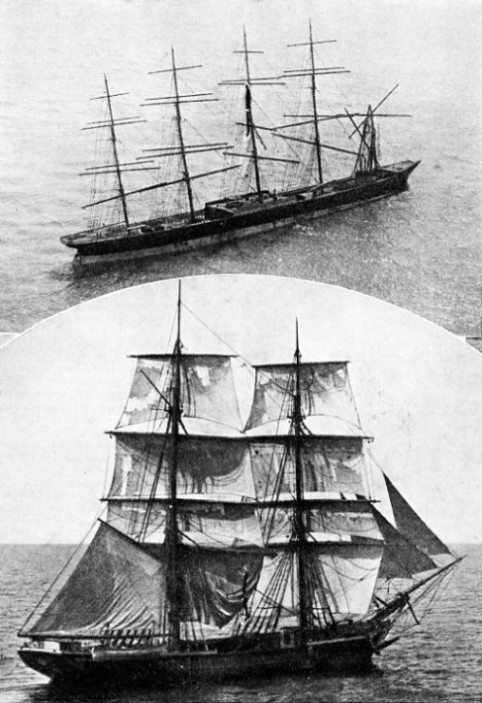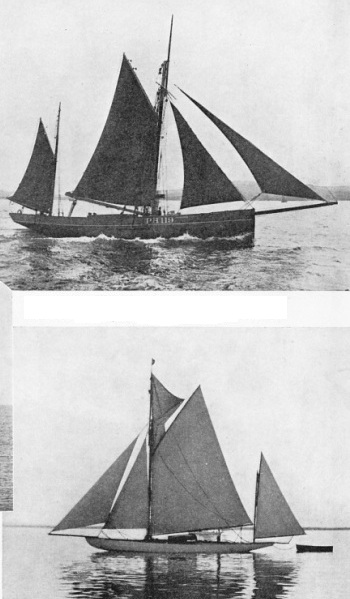
© Shipping Wonders of the World 2012-



Part 27
Part 27 of Shipping Wonders of the World was published on Tuesday 11th August 1936.
This issue included a colour plate illustrating the Empress of Britain, which forms the frontispiece to Volume 2. The same illustration was used as the cover to part 5.
The Cover
This week’s cover shows a sailor looking forward to catch a glimpse of the land ahead. The sailor is on board the P & O cargo vessel Eston (1,487 tons gross) on her way from Sunderland to Havre with a cargo of coal. This small but efficient vessel is typical of the cargo vessels that make up a large portion of British shipping.
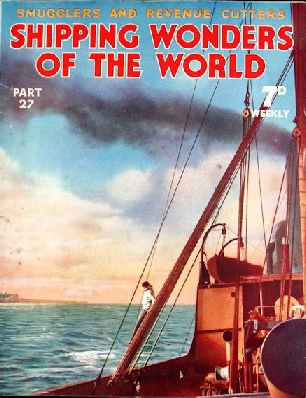
French Shipping
Few maritime nations can claim a mercantile marine history as proud as that of France. French shipping is of great diversity, ranging from fine Grand Banks fishing fleets to fast transatlantic liners. Shrewd common sense, an ability to look ahead and a practical strain have always been characteristics of the French nation; and in none of its activities have these characteristics been seen to better advantage than in its shipping. This chapter traces the history of the French Merchant Service from its earliest days to the present time, when the giant transatlantic Normandie, the world’s largest ship flies the tricolour.
This is the fifth article in the series on Sea Transport of the Nations.
Smugglers and Revenue Cutters
Many and ingenious were the devices used by the smugglers of the eighteenth and nineteenth centuries to deceive the Revenue men. There are few stories of adventure as exciting as some of the incidents in the hazardous life of thee law-breakers.
Diving Adventures
Scientific experiment and research have now made it possible for men in flexible diving dresses to descend to depths as great as 300 feet below the surface of the sea. The perils that are met at such depths cannot be paralleled elsewhere. This chapter is concluded in part 28.
The Empress of Britain
ILLUMINATED BY FLOODLIGHTS, the distinctive appearance of the Empress of Britain is emphasized. She is a Canadian Pacific liner with a gross tonnage of 42,348. One of the world’s largest ships, she has an overall length of 760 ft 6 in and a moulded beam of 97 ft 6 in. Her moulded depth to the top of her sun deck is 100 ft 6 in. The chapter beginning on page 141 fully describes this magnificent vessel. She was built in the same yard as the Queen Mary and was launched by H M King Edward VIII (then HRH the Prince of Wales) on June 11, 1930.
Contents of Part 27 (continued)
Handling the Overseas Mail
The carriage of letters and parcel post to outlying parts of the world is one of the most important services rendered by shipping. The organization of the overseas postal services is remarkable for its complexity and its efficiency.
The Famous Great Eastern
It was not until more than fifty years after the keel of the Great Eastern was laid down that vessels of larger dimensions were put into commission. She was a unique ship, provided with sails and paddles as well as with a screw propeller. When the Queen Mary sailed on her maiden voyage not many of us recalled that fewer than eighty years ago a transatlantic liner was built whose length was nearly three-quarters that of the Queen Mary. This first leviathan of the seas was the famous Great Eastern. This chapter gives a full account of this interesting liner.
A River Amazon Trade Cargo-Passenger Ship
A description of the Clement and the Crispin, engaged on trading up the Amazon to Manaos from Liverpool. The owners are the Booth Steamship Company, and the details apply to either vessel. The length between perpendiculars is 405 feet, the moulded beam 55 ft 6 in, the depth to the upper deck 36 ft 6 in, and the draught in loaded conditions 25 ft 2½ in.
This is the nineteenth article in the series on Merchant Ship Types.
Rigs of Sailing Ships
Sailing ships were formerly classified by their size or employment, but it is now the custom to distinguish different types of vessels by defining their characteristic rigs. This chapter is designed to clarify, with its numerous illustrations, the definitions of the various rigs used.
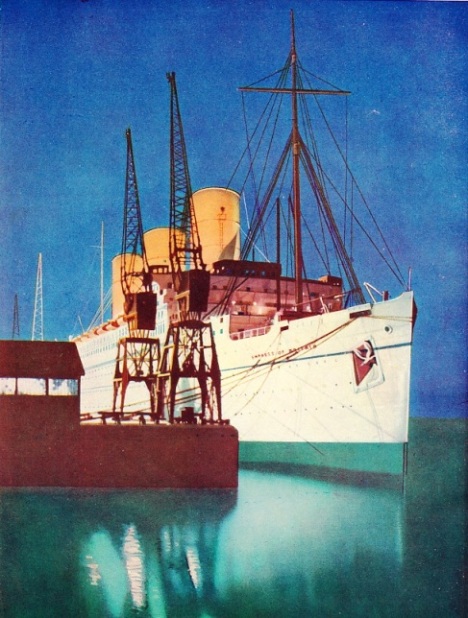
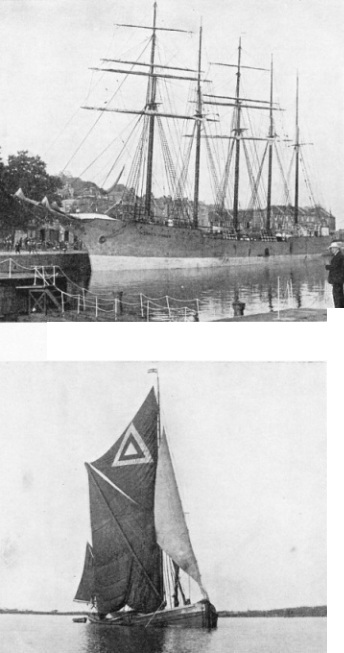
A FIVE-MASTED AUXILIARY SCHOONER of 1,859 tons gross, the Werner Vinnen is one of the fleet built for the firm of Vinnen of Hamburg about 1922. Her rig is peculiar having squaresail on the fore- and mizenmast.
SPRITSAIL BARGES are a type to be seen on the River Medway and Thames. The mainsail is set on a sprit extending from the foot of the mast. This photograph shows the Gertrude May of Rochester. A barge of 60 tons register, she was built at Sittingbourne, Kent, in 1893.
THE PREUSSEN, A FIVE-MASTED FULL-RIGGED SHIP of 5,081 tons gross was the only one of her type ever built. This photograph shows her wrecked near the South Foreland in November 1910. Previously a collision had carried away her foremast. The Preussen was built in 1902. She was 407 ft 9 in long, with a beam of 53 ft 7 in.
BRIGS ARE SQUARE-RIGGED on the two masts though a spanker was generally set on the mainmast, as shown in this photograph of the Evangelistria. She was a Greek vessel, and in 1892 there were forty-three Greek and Turkish brigs of that name on the register. They were all between 100 and 200 tons.
